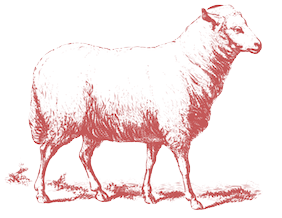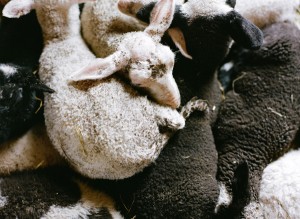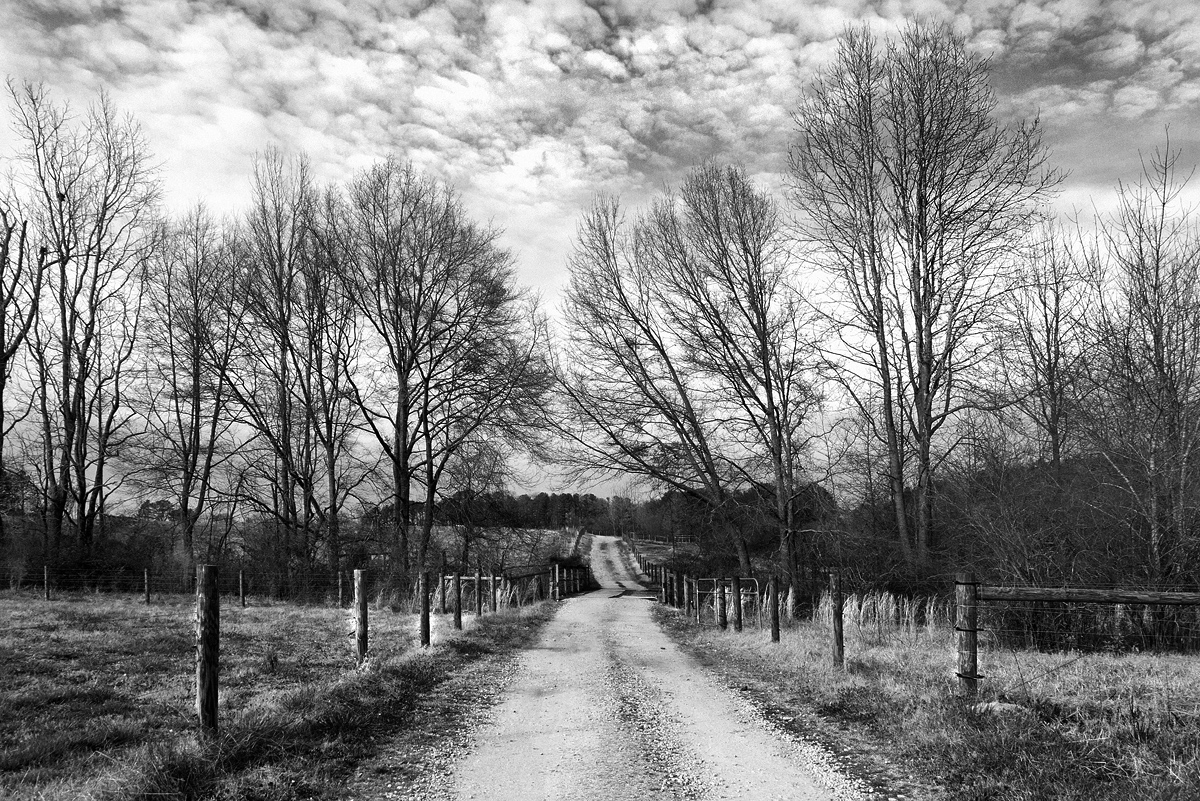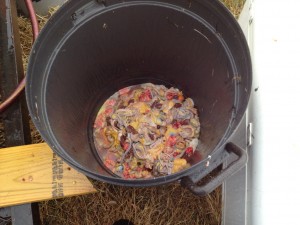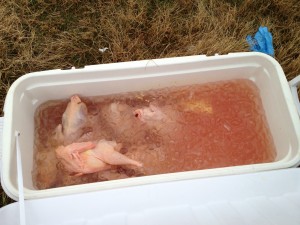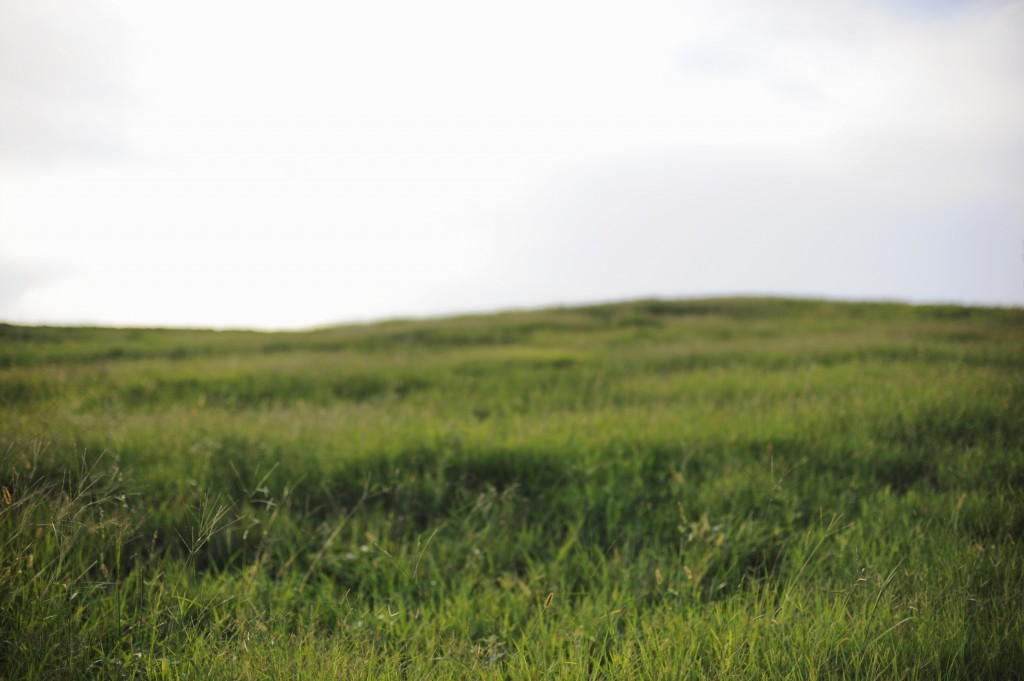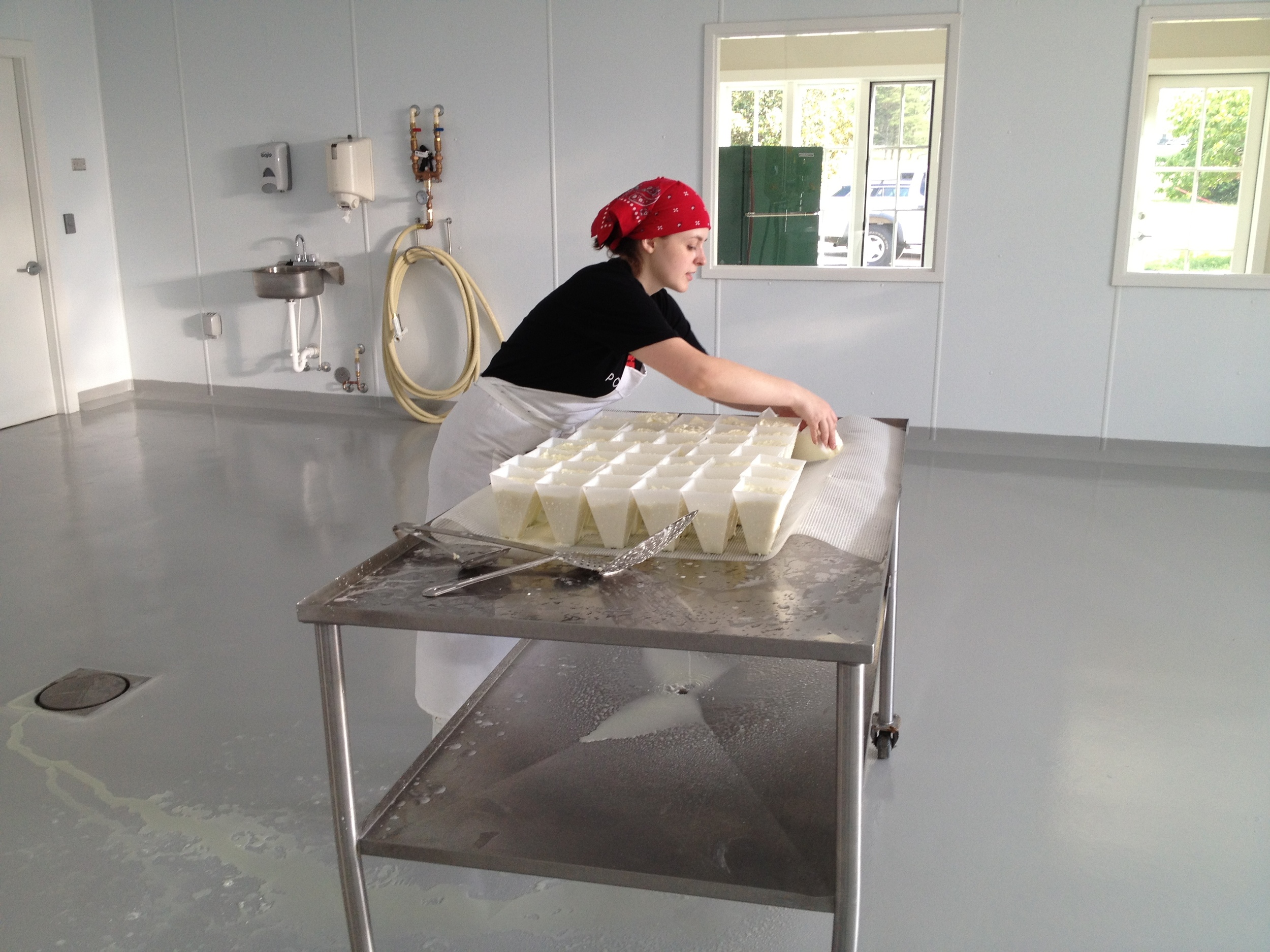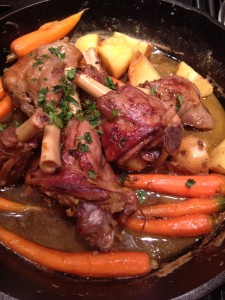Lately at the farm, we've had a lot of questions about the rennet we use. So many, that it bears discussion. Or in this case, a bit of an educational rant. The main question we've been receiving has really been more of an objection: an objection to our use of animal rennet.
But first, a bit of science: rennet is a general term that refers to the enzyme chymosin. Chymosin is a protease enzyme that has the amazing ability to coagulate milk. Milk coagulation is the fundamental feature of cheesemaking. We coagulate milk in two ways: through the addition of lactic acid producing bacteria and through the addition of chymosin. Both perform proteolysis in different ways. Chymosin is exceptionally good at coagulating milk. Much more so than lactic acid bacteria. It works by cutting the proteins, specifically the kappa-caseins apart. This causes the hydrophilic casein particles to become hydrophobic. The proteins then re-bond, trapping water inside a new structure and thus, produces a gel.
Whew. OK. Here's the take home: rennet is largely responsible for the proteolysis of milk. Proteolysis causes the proteins in the milk to break up into amino acid chains. Amino acids are responsible for the production of flavor compounds in food. Let me say that again: amino acids are responsible for the production of flavor compounds in food.
All those scientists who sit in labs all day developing "natural" and "artificial" flavors for everything from candy to canned soup: they are manipulating amino acid chains. Cutting them. Binding them. Mixing them up.
And here's the deal: the more amino acid chains you have, and the more different ways you cut them, the more flavor happens. When someone says that the flavor of something is "complex" they are describing an interplay of tastes and aromas that is born out of the interactions of many different amino acid chains (and fatty acid chains, and sugars, and a whole bunch of other stuff) floating around in their food. The "Malliard reaction" that food folks get so exited about: that's a bunch of broken amino acids recombining with sugar as they are heated.
So, to recap: chymosin coagulates milk and in doing so, produces flavor. Chymosin is in rennet. But what else is in rennet? What the heck is rennet? Well, there are three answers. Animal, vegetable, and microbial.
Animal rennet is a suspension of enzymes and amino acids in water, the predominant enzyme being chymosin along with pepsin and lipase. It is a tea (of sorts) concocted from dried bits of milk-fed animal stomachs. Rennet is not, as it is commonly believed, found in animal stomachs. Rather, it is a concoction derived from animal stomachs. Rennet is the collected chemicals needed to break down milk, to digest it, as it were, outside the animal's stomach, for the purpose of making cheese. These enzymes have specific molecular structures that are unique to the species of animal that it comes from. Think about it: rennet is the collection of digestive enzymes found in the stomach of a milk-fed ruminant. These enzymes are evolved quite specifically to digest the milk of that specific animal. There are a lot of totally unstudied interactions that happen when species-specific milk and species-specific rennet interact. But we do know this: it is complex. And we know this too: it produces complex flavors.
Animal rennet, however, has a bit of a dark side (apart from the fact that it requires animal death, which, frankly, if you take issue with, you've come to the wrong blog and why are you reading about cheese anyway?). Most bovine rennet (the most commonly used animal rennet) is a by-product of the veal industry. The veal industry in the United States is notoriously inhumane. Is it possible to find animal rennet that is not a part of the industrial food complex? Yes. But it can be challenging. It is also, typically, not economical for larger producers.
Vegetable rennet is derived from thistle. It's made like animal rennet: the stamens are soaked in water to form a tea, but the enzyme is completely different. Thistle rennet's acting enzyme is cardosin, or cyprosin. It has very powerful coagulation properties and has its own, unique flavor profile. Cheeses made with thistle rennet often have strong bitter flavors and acidic tangs. It is traditional to certain Spanish and Italian cheeses.
Finally, there is microbial rennet, sometimes referred to as “vegetable” or “vegetarian” rennet. There are actually two types of microbial rennet. First is derived from a species of fungus called rhizomucor miehei or the mould mucor miehei other similar species of molds and fungi that, when fermented under specific conditions produces a protease that will coagulate milk.This is not a traditional practice anywhere and was created for the dairy industry to suit kosher and vegetarian markets. The flavors produced are generally bitter, but controllable with correct dosage. There are no secondary flavor components as with animal rennet. Chymosin is all you get here.
Then there is fermentation produced chymosin, or FPC. FPC is probably the most used rennet among industrial cheese manufacturers and is not uncommon in smaller cheesemaking operations. By some estimations, more than 90% of cheese produced uses FPC.It is made by gene splicing: first, theRNA sequence for chymosin from an animal source is removed and then inserted into microbial DNA, usually a sub-species of E. Coli (because they replicate very quickly). These genetically modified microbes are then fermented to produce pure chymosin. This chymosin is totally pure and highly concentrated. Did you catch that? This type of rennet is produced through genetic modification. It is a GMO product. It is also arguably not vegetarian, since bovine rennet is the initial source from which the chymosin is derived. It is also pure chymosin. There is nothing else, no other adjunct enzymes, peptides, no amino acids; thus, it has minimal flavor contributions to the finished cheese. It just coagulates milk really, really well. And guess what? It's super cheap. [As a matter of interest, FPC was the first FDA-approved GMO product: http://articles.latimes.com/1990-03-24/news/mn-681_1_genetically-engineered-product-for-food]
You can tell a lot about a cheesemaker by the type of rennet she or he uses. Much of the time, producers choose the “friendliest” rennet, one that is vegetarian, non-GMO, and Kosher/Halal to please the widest possible market. Some producers don't know about the GMO issue. Some don't care and want what works fast and can be gotten cheap. Still others feel that the other enzymes and amino acids found in animal rennet are important enough flavor contributors that they are worth justifying (or in some cases, ignoring) the ethical questions involved.
And so, we come back to the initial question we were asked: what type of rennet do we use? We fall into the latter group: we use animal rennet, specifically an ovine rennet that we buy from France. It is traditionally made, meaning that the animal stomachs are dried and made into the "meat tea" that is rennet. It has a salty, meaty aroma in the bottle. It's forgiving in measurement and dilution; in other words, if I miss-measure by a milliliter or two because I'm pouring by hand, it's not going to have a noticeable effect on the curd (unlike FPC and microbial coagulants). It gives us a smoother, more uniform curd. It gives a higher yield of finished cheese. Most importantly to us, because it is an ovine rennet being used with sheep milk, it is full of the enzymes and peptides that cause secondary flavor-producing reactions that impart deeper, more interesting flavors than other rennets we've used.
We produce an niche product. Our values are that of taste, tradition, and sustainability. We don't think that a product like microbial rennet or FPC that are made using inaccessible, industrial equipment and techniques (such as gene-splicing) is sustainable, especially when there is a good (if imperfect) more sustainable alternative available. We're also OK with not being vegetarian or Kosher. We're not trying to please a wide audience of cheese eaters. We are trying to add to the diversity of product and flavor out there. Our rennet choices reflect that intention. And, of course, we like how it tastes, which is our primary goal as cheeseamakers.
